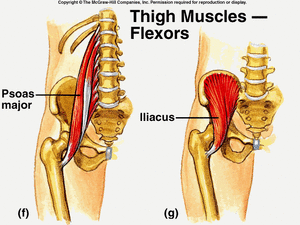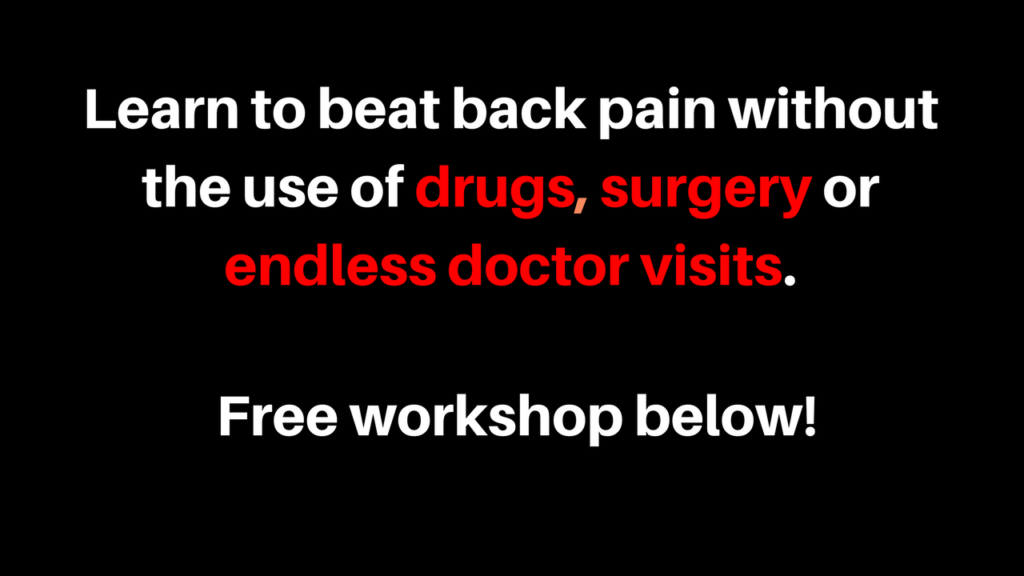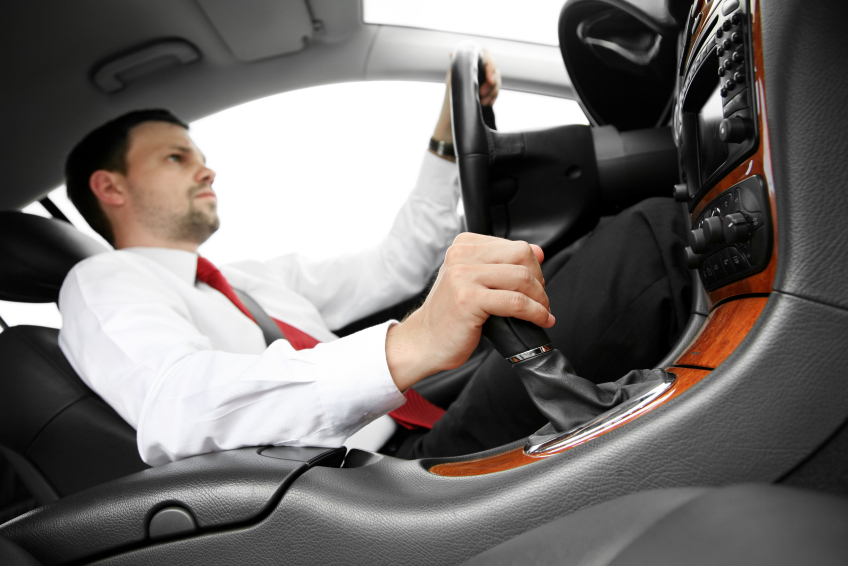
I know what it’s like to sit behind the wheel of my car and have my left leg start to go numb/tingly or get this sensation that it needs to be stretched from being so tight.
I also know what it’s like to get to work and feel like no matter what I do to get up and move around It feels like a vice is being tightened around my lower back.
Commuting long distances and dealing with lower back pain is like mixing oil and water. It’s extremely hard to find the balance between a sensitive back and the dreaded drive to and from work or whatever the commute is. The fact is, while you continue to desensitize your lower back, you need to set up a strategy to minimize the stress and irritation while you work towards getting relief.
I know first hand what it’s like to struggle with chronic back pain and have to commute long distances back and forth between work and home. It sucks! Before I got relocated I was driving over an hour each way…that’s assuming there was no traffic. The hardest thing about the trip was the fact that it was the first thing I did in the morning. By the time I got to work, my back was smoked and it really didn’t matter whether I stood or sat for the rest of that day, my back was HOT! It would get to the point where I would have week-long bouts of inflammation where nothing I did seemed to bring relief.
What I have learned over the years (still having a solid hour commute one way) is stressing and dreading over the drive only exhausts you mentally and will add tension and tightness in your lower back (yes the mind will cause the exact thing you’re afraid of happening).
For today’s focus, I want to work on a few things you can focus on before and after the commute.
Why does my long distance commute cause me pain and where should I start to getting relief?
Hours and hours and days upon days of static sitting does a number on a lot of things. One of the major things is the shortening and tightening of some of the muscles in the hips and trunk. Your body wants to adapt to its environment so if you sit in your car for an hour then sit at a desk all day just to jump back in your car, go home and sit to eat dinner then sit to relax and watch TV. You can imagine the effects this has on the body.
The serious back pain comes from a number of different things but one of the things I want to highlight is your hip flexors and psoas. These are muscles in the hip that play a lead role in hip flexion. When sitting, these muscles are shortened and over time get stiff if they are not tended to. This was one of my most neglected muscle groups when it came to my daily mobility drills. 
On top of your hip flexors and psoas being overly tight, your core is now trashed. One of the biggest mistakes people make is not training their core the right way. Notice I said “the right way”. I give it to some people, they will diligently sit on that stupid ab crunch/back extension machine and crunch well into the 3rd song on their playlist but this is the furthest away from what’s important. After a few hours of sitting, your core begins to lose its stamina. It doesn’t have the endurance to withstand hours and hours of holding your upper body in a healthy position so it gets lazy. This laziness results in poor posture which become long-term habits.
How do I loosen my Hip Flexors/Psoas?
I never just start yanking on a muscle without doing some kind of tissue release first. This strategy has brought me the most success so I want to pass this on to you. Below is my crash course on some of the best Psoas release work you will find for a tight Psoas.
Check it out:
Take Action: Spend 2-3 minutes on both sides of the belly button.
Now that you have spent some time on releasing this area lets look at bringing length to the muscles. Below is a video of the technique that I use to safely stretch the psoas with little to no stress on the lower back. If you are dealing with some sensitive tissues in the lumbar spine, pay close attention to how much extension you’re allowing yourself to go into while doing this exercise. If you deal with arthritis, inflamed disks or facet joint issues, the extra extension is only going to cause a flare-up. Keep this in mind.
The video is slow and kind of dry but he does a really good job describing the correct way of doing this stretched especially for lower back pain suffers.
Take action: Do 2 sets of 2 minutes on both sides
The key to these two activities is breathing deep into your groin while doing them. It’s one of the most important factors when dealing with chronic back pain. Breathing alone is a whole different article in itself. I’ll get to that later! Just understand that the affected areas need freshly oxygenated blood in order to release stiffness or inflammation. This means you will want to take deep, full breaths.
Core Endurance for long distance commuting
The key to fixing your core problem is to train for endurance, not for strength. Strength means nothing when your 2 lattes into your 10-hour drive. Your spine needs more than just core strength. It needs to last, like the energizer bunny of the body. The majority of the people in gyms today (including myself at one time) are training their core or “abs” all wrong. Without going into too much detail, train your core with your spine in a neutral position and do endurance based exercises. Let’s dive into some below!
Instead of taking you through another 1500+ word article for core training what ill do is throw some links down below that really bring the point home that I know will bring you tons of value. Bookmark this page and work through each article one at a time.
Oldie but Goodie: Beginner exercises for lower back pain.
[VIDEO] What is Core Locking and why should you do it?
[VIDEO] Planking the DO’s and DON’TS
[Article w/ Video] 3 Essential Core Exercises for a Sensitive Bac
What about when I am in the car? What can I do to prevent lower back pain?
Move/Breathe/Repeat
One thing that comes very easy to me is fidgeting. I am always moving and adjusting posture, dancing around or stretching my legs while driving. I have tested and tried the whole “maintain perfect posture during your entire trip” and to be honest that advice is garbage. Perfect rigid posture is just another form of a static position. We want to refrain from static positions. So fidgeting/moving around is what I do and it works!
I wish the solution was as simple as that but this is a theme you are going to see when it comes to long commutes and hours behind the wheel. You see, our bodies are designed to move, not stay still in fixed positions. Moving around and changing your position allows you to contract and relax muscles that have gone dormant over the length of the trip.
Have you ever noticed your butt going numb after sitting for long periods of time? This may seem funny but it’s actually a bad thing. It means the area is getting less circulation. You can keep this from happening by contracting the glutes both individually and both together a few times throughout your trip. This “wakes them up” and increases circulation to the area.
Another technique would be shifting your weight from side to side, stretching one leg out at a time and reaching for your toes (You can do a version of this with BOTH hands still on the wheel. Do this with caution but on cruise control, it can be done safely). You can also pull your belt tight around your waist and practice squeezing your glutes as hard as you can while pressing up into that waist belt. This forces your pelvis into its correct position and helps align the surrounding hip. I’ll do groups of these at random times or if I feel a certain area is starting to tense up.
The next thing I look at is my lumbar support. It’s a no-brainer when it comes to helping your back with support BUT depending on your car it may not be fit for you. For example, my seats are a little older so I sink into the seat a bit more than normal so I have to fold up a towel and place that down first then sit on top of that. It brings me up just enough for the lumbar support to fit perfectly along the curve of my back. Without that towel or extra lift, the lumbar support would be in the wrong position and it would only make my ride even worse! The moral of this story is to get to know your car seat, what it can do and if the way it sits right now will either help you or hurt you.
Breathe:
Stress and lack of what I call “Physical Focus” (these are your thoughts and ability to focus on yourself, the position of your body and quality of your breathing.). Forces you to take your mind off of your body and put it elsewhere. Your body will go into auto pilot and run off of shear muscle memory. Which is exactly what it’s designed to do but what tends to happen is your breathing becomes more choppy and shallow. This done over and over creates poor habits that will impact how we recover.
As you shift and move take 1-2 minutes once you settle to take full deep breaths into the base of your ribs. I will cycle one deep breath into the base of my ribs then the second deep breath pushing it deep into my lower back making sure the muscles are not tense and getting stiff from being in that fixed position.
Take time during your trip to do some focused breathing. You will notice a big difference in the stamina your tissues have.
[BONUS VIDEO]
I made this bonus video for you after a long trip from Va to FL. I go over what I did to survive the 15 hour trip!
Check it out!
Like I always say. Beating back pain is the process of addressing a list of things one at a time. You can’t fix everything at once. The main reason for this is the majority of back pain comes on from poor habits over a long period of time. Beating it requires you to do a 180 and climb your way out of the “pain cycle” you are on. This means new habits and way more thought being put into how you move and react to your environment (at least for a few months while these new habits are being set in)
Let me know below! Have you ever taken the time to stop and focus on your breathing what did you find?
Did you like the article? Hate it? Share it with a friend on your favorite social media platform. Your helping people all over the world with back pain by doing so!
If you are new to the F4BP community you don’t want to miss this mini course I put together as a FREE gift to you!



Has anyone else experienced that their right leg is now shorter than their left after years of commuting? I only just discovered this a few days ago. I think it’s because I keep my right leg tensed up while a drive to operate the pedals, whereas my left leg just stretches out under the wheel.
Interesting discovery. It makes sense the muscle tone being different due to what you described. Have you tried to address it with mobility work?
Hey William! Thanks is so much for the tips on how to avoid lower back pain during long commutes. I suffered from numbness and weakness in my lower back during/after driving long distances. If I’d have known these simple methods of prevention I would have been so much more comfortable. However, now I’m grateful I can take these with me going forward. Thanks so much!
Thanks for checking it out and leaving your thoughts! I am happy it helped!
Hi William, I’m so grateful for your videos and emails. I am not a lower back sufferer (Thank God), however I am well versed in pain recovery from neck whiplash and shoulder injury (MVA) and know the value of self-awareness and healthy movements. I am now a Pilates and Meditation instructor. I am constantly looking for ways to improve my knowledge of the body, knowing how important breathing, deep core activation and correct stretching are. So much so that I created a program called Sanctuary Stretch, which combines all these values and more. The one thing your content has done for me, which is encouraging and fabulous, is to reinforce what I already believe and expand on it. You probably know the principles of Pilates are all grounded in the points you commonly discuss, sadly I think in today’s culture more focus has been placed on “High performance fitness” and “Physical appearance” and has lost some of the subtle but vital breathing and mindfulness components. I also see far too many clients who have been dependent on pain medication for far too long with little to no long-term relief, and the Doctors offer few other options aside from surgery. I am hoping to alter the way people manage and perceive pain through mindfulness meditation and gentle movement. I love your catch phrase “Physical Focus”. Awesome! So this was just a thank you and keep up the great work!
Wow, thanks so much for the support and your comment!